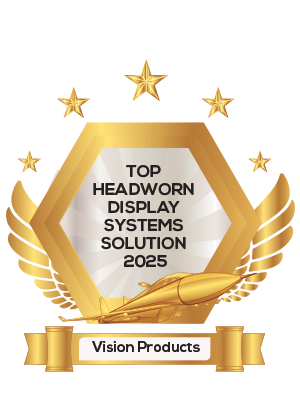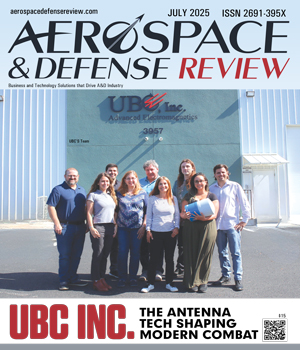THANK YOU FOR SUBSCRIBING
 Vision Products, a U.S.-based small business, is shifting the paradigm in military AR by doing what few can—building high-performance HMDs entirely from U.S.-sourced components in a bold break from industry norms. This isn’t a marketing gimmick but a strategic design decision rooted in the trust and independence that domestic control enables, something offshore sourcing can’t match.
Vision Products, a U.S.-based small business, is shifting the paradigm in military AR by doing what few can—building high-performance HMDs entirely from U.S.-sourced components in a bold break from industry norms. This isn’t a marketing gimmick but a strategic design decision rooted in the trust and independence that domestic control enables, something offshore sourcing can’t match.
The company specializes in developing advanced electro-optical systems that remain several steps ahead of the competition. Much of this edge comes from the industry’s overreliance on technologies like waveguides and analog sensors—waveguides are often fragile and produce blurry imagery, while analog sensors limit the integration and fusion of advanced digital data streams.
Vision Products takes a different path. Its systems are built to be rugged and digitally native, pioneering capabilities in night vision HMDs and digital night vision goggles (NVGs). The imagery they generate can be recorded, enhanced with AI/ML, fused with thermal sensors, and shared in real-time with teammates and command centers—dramatically increasing situational awareness.
-
Instead of forcing helicopter pilots to look down at the cockpit, our system projects vital information like terrain, speed, altitude and location, as well as sensor video, directly into their line of sight in a wide, high-resolution field of view, effectively mitigating DVEs
Two of its most advanced systems best illustrate the company’s capabilities. The SA-147/S is an AR HMD that delivers a 147-degree diagonal FOV, among the widest available anywhere in the industry. Unlike conventional AR displays, which often suffer from tunnel vision, this device provides visual data without compromising situational awareness. The A3RO DS-62/S, developed in collaboration with the U.S. Army, is a fully compatible binocular HMD that integrates with standard Army aviation helmets and NVGs.
These devices’ clarity could have been critical in helping to mitigate fatal accidents where pilots were effectively flying blind. In the crash that resulted in the tragic demise of Kobe Bryant, his daughter, and other occupants, an HMD might have given the pilot the needed visibility to avoid terrain. Even the recent crash at Ronald Reagan Washington National Airport, though not a DVE scenario, required the pilot to look down at night to access vital flight data, sacrificing valuable seconds. Vision Products emphasizes that one of the most meaningful ways to honor such tragedies is by learning from them and applying those lessons to prevent future incidents.
To counter supply chain threats from China and other countries, Vision Products maintains complete vertical control over its U.S.-based supply chain, enabling rapid adaptation to new features or mission profile changes, courtesy of a lean team of industry experts. Browne, an industry veteran, led the design of the HMD for the F-35 program, and many under him contributed to the design of JHMCS—the world’s leading fighter jet HMD today.
This depth of expertise at Vision Products’ disposal ensures past mistakes aren’t repeated while delivering the precision and autonomy needed to advance in a field long shaped by scale. Its systems are already reshaping how soldiers and pilots see the battlefield—not in the future, but now.
| Share this Article: |
Vision Products
Company
Vision Products
Management
Michael Browne, Ph.D., President
Description
Vision Products, headquartered in Campbell, California, specializes in high-resolution, wide field-of-view head-worn display systems for military and commercial use. Originally a division of SA Photonics, it became an independent company in 2021. A leader in AR, VR, and MR technologies, it has leveraged small business innovation research (SBIR) and other DOD funding to drive innovation and rapid growth.






